It seems from other articles that at least at this point in the "bicycle craze" the New York Journal was not in favor of women wearing bloomers, so perhaps the paragraph (indicated in bold text below) is more an expression of the point of view of the publication and not just the parrot.
A Profane Parrot that Rides a Bicyclehttps://www.loc.gov/resource/sn84031792/1896-04-19/ed-1/?sp=38
A BICYCLIST parrot Is a conspicuous figure of life on the Boulevard and other uptown thoroughfares which are given up to the riders of the wheel. Everybody Is to be seen on a bicycle nowadays: old women, old men, babies and so forth. It is, therefore, not surprising that a parrot should make his appearance, for no creature could be more active, gay and sociable.
But this particular bird deserves mention for other reasons than the mere fact that he rides a bicycle. His conversational eccentricities are the amusement and the terror of the bicycling community.
The bird's full name is Don Cesar, and his owner Is J. J. Walsh, of No. 490 Sixth avenue, who tells endless stories of the indiscretions of the bird.
Do not expect to hear that Don Cesar turns the pedals of a bicycle himself by any means. Even If that were possible he is too averse to hard work to consent to any such arrangement. When he wants exercise he takes it on the wing, but the tongue is the member which he chiefly loves to agitate.
He perches in the middle of the handle-bars, on the spot where some enthusiastic bicyclists place their babies. There he stands and vociferates and scratches himself. Now and then he ducks his head down to see how the front wheel is going. It Is a wonder that he has never punctured the tire and dislocated his beak, but that has not happened yet.
Occasionally he leaves the handle-bars and takes a fly into the air. For a parrot he is a good flyer. Having taken a view of the crowd, of the river, or whatever may be in sight, he returns faithfully to the wheel. Mr. Walsh slackens his speed slightly when the bird goes flying.
Don Cesar Is a green and red parrot of South American birth. At one time he belonged, like most parrots, to a seafaring man. During that period of his career he visited the principal ports of the world and learned at least four different languages. These languages consist chiefly of profanity.
It brings prosperity to have a parrot on board ship, just as it means means certain misfortune to have a black cat. Once Don Cesar was left ashore in a saloon in Rio Janeiro by a thoughtless mariner. The ship had weighed anchor, but a deputation of seamen, having represented the gravity of the situation to the captain, the longboat was manned and Don Cesar was rescued. When he was safe on board he swore with such vigor that every one was satisfied that he would have brought evil to the ship If he had stayed ashore.
One of the most dangerous things a sea man can do is to give away a parrot who has learned nautical ways. But Mr. Walsh earned the friendship of a sailor to such an extent that he gave him his parrot, Don Cesar, a bird of rare experience. Now, the bird has changed his proud position of mascot on a ship to the equally eminent one of figurehead on a bicycle In the streets of this metropolis.
Don Cesar's favorite languages are Spanish, Italian, French and German. You may hear him almost any evening on the Boulevard carrying on a monologue of this sort: "Noni d'un chlen, veut-tu ficher la pals'?"."Corpo dl Bacco."."Tas d'idlots."."Caramha."."Allez au diable."."Pesta."."Ach du lieber Gott!"."Oh, la, la!"
According to his owner Don Cesar becomes speechless with rage at the sight of a woman in bloomers. He sets up a fierce, hoarse shriek, which he keeps up for several minutes, at the end of which he is in danger of falling off the handle-bars. Evidently he has old-fashioned ideas on the subject of women. He believes that they should stay in petticoats. When they are so attired he is very affable, submitting to have his head scratched, but, sad to relate, he does not relax his profanity.
Don Cesar enjoys bicycling very thoroughly, otherwise he would not go riding. He gets the best part of it, the fresh air and the excitement, without the exertion and the fatigue.
Of course he behaves himself interesting at other times than when he is on the wheel [bicycle].
It is his habit to salute his master when he returns home, at whatever hour this may be. His favorite greeting Is: "Hello, popper! I see you!"
He repeats this a number of times In a very loud voice, accompanying his remarks with a shrill, mocking laugh. This trick used to cause a little embarrassment to Mr. Walsh when the hour of his return was one which he did not wish to have announced to his family and all his neighbors. Any attempt to silence Don Cesar by threats of violence or throwing a cloth over him was met by louder shrieks. Don Cesar proved utterly incorrigible in this respect, and so his owner has become very regular in his hours.

https://www.flickr.com/photos/backintheworld/
Nowadays people often use trailers to travel around by bike with their animals - usually dogs, such as this photograph reused from Flickr shows. I don't recall seeing any parrots on handlebars, though. I have thought about having a trailer for my family dog perhaps in a few years when she is a little older and might appreciate it (more).
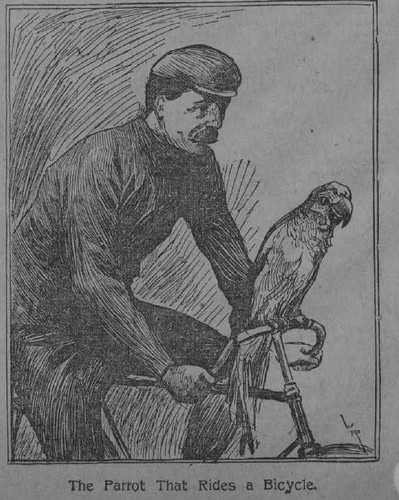


![After the [Bicycle] Ride-1897](https://c2.staticflickr.com/6/5469/31023578281_8f00432621.jpg)





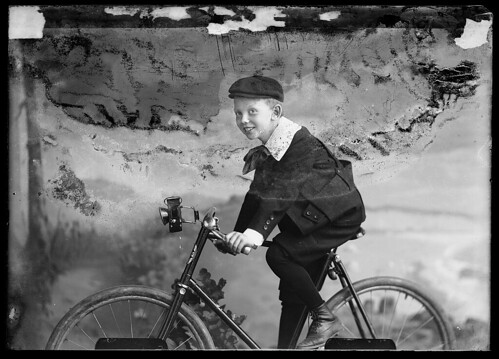








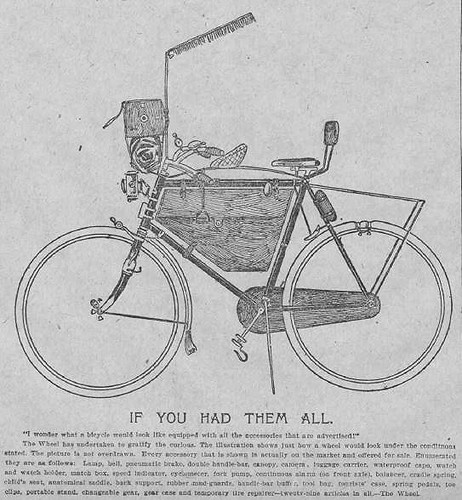












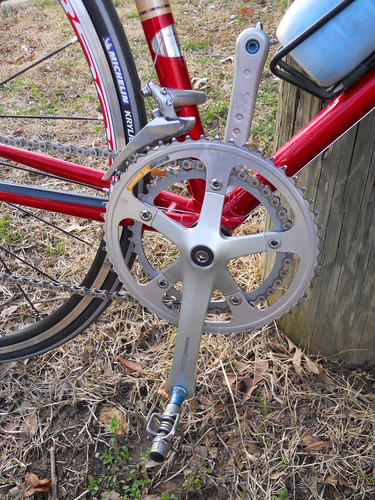




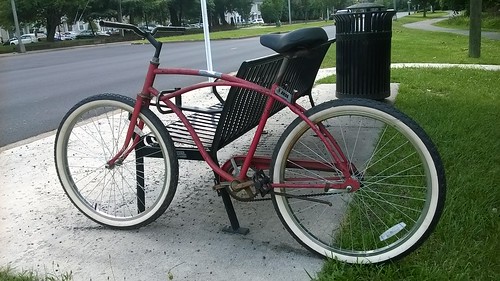
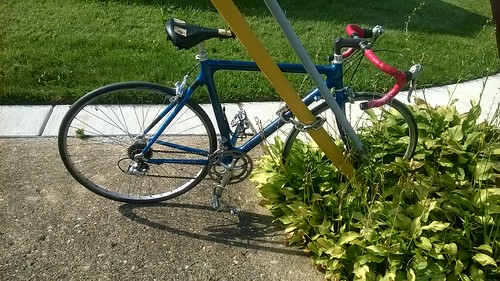
![Donaldson Bicycle Lithos [of 1896]](https://c4.staticflickr.com/9/8544/27877958203_363a76f689.jpg)